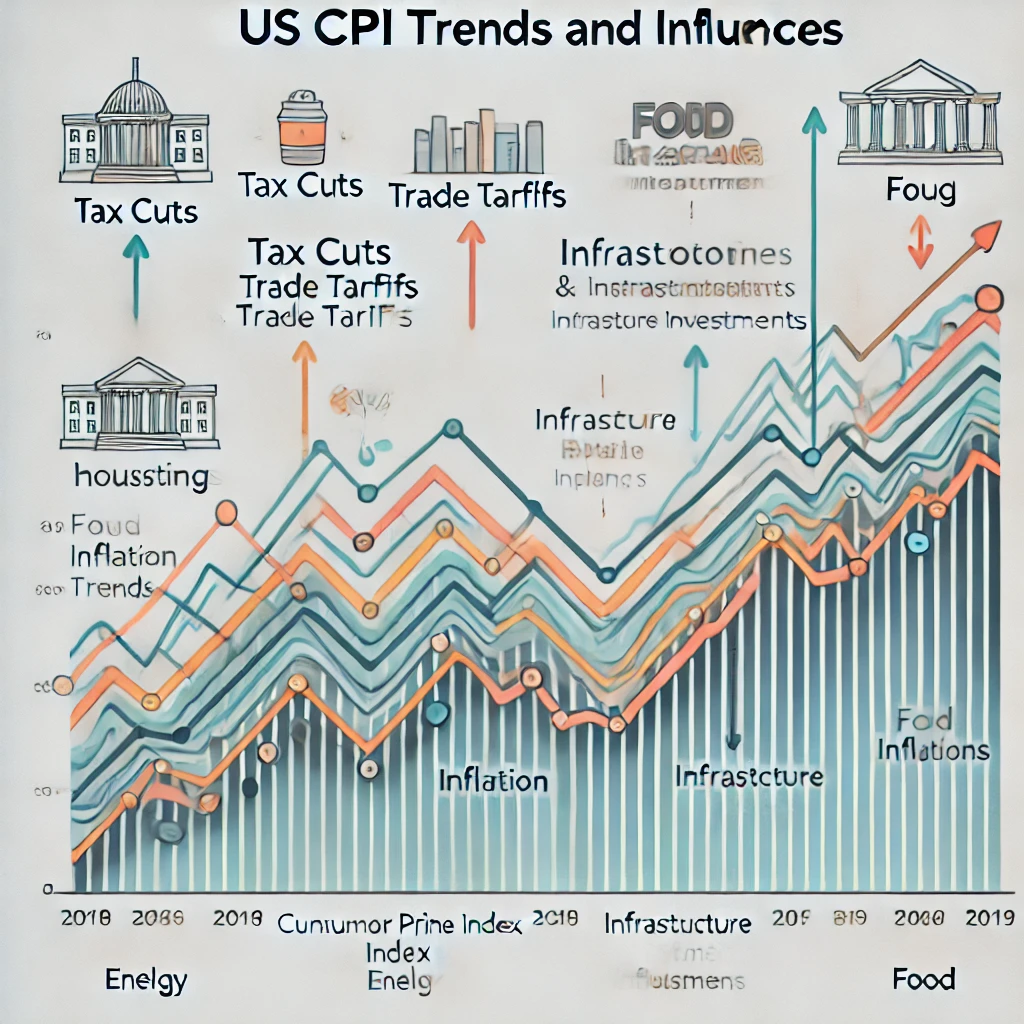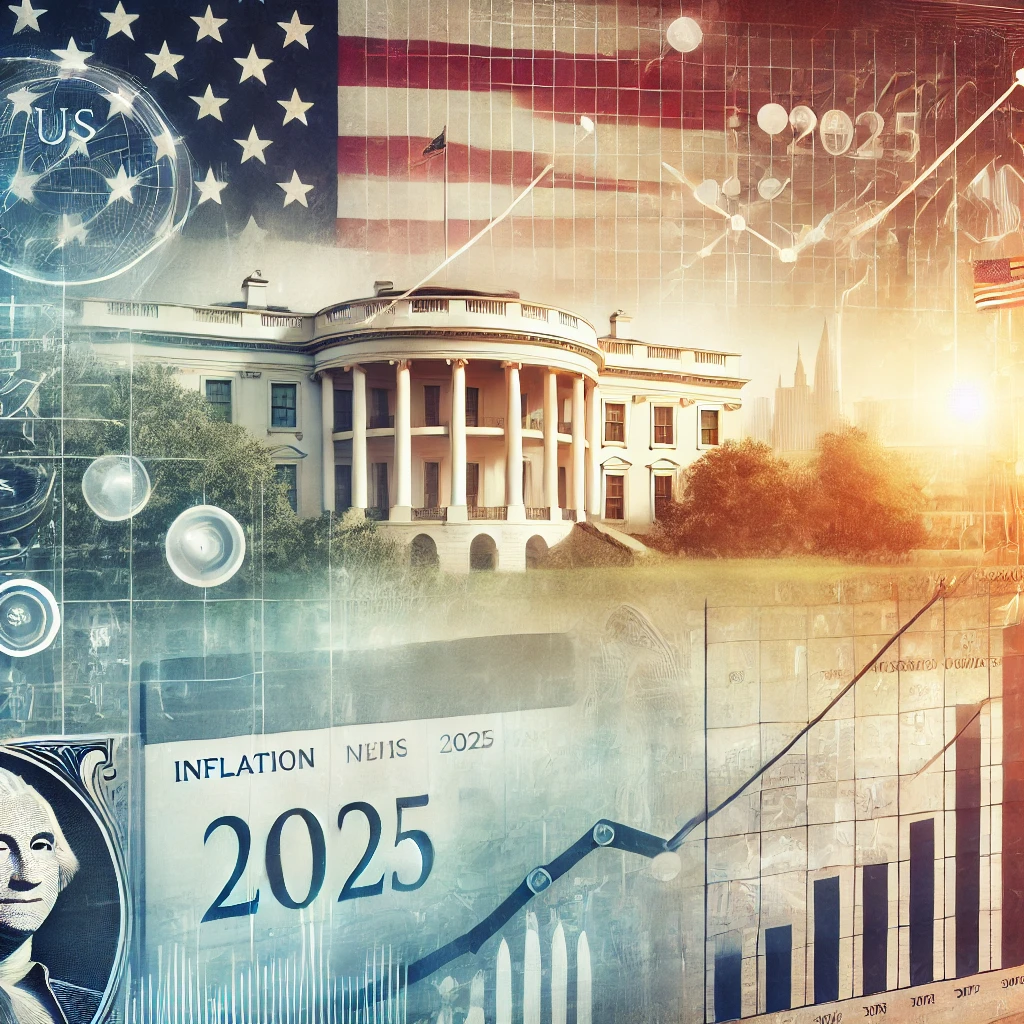Table of Contents
Introduction
The US CPI Release Today is anticipated to play a pivotal role in shaping market sentiment, especially as the country prepares for Donald Trump’s second presidential inauguration. This report not only reflects current inflationary trends but also influences future economic and policy decisions. With global markets closely monitoring the US CPI Release Today, the implications extend far beyond U.S. borders.
The US CPI Release Today is of immense significance in shaping economic and market trends, especially with Trump’s impending inauguration in 2025. Stakeholders, including investors, policymakers, and consumers, will closely monitor this data to assess the direction of inflation and its wider implications. The energy and housing sectors warrant particular attention, as any unexpected developments in these areas can significantly impact market sentiment. By remaining informed and flexibly adjusting to market conditions, individuals can effectively navigate the complexities of an evolving economic landscape.
What is the US CPI?
The US CPI Release Today is a measure of the average change in prices paid by consumers for goods and services over time. It is widely regarded as a key indicator of inflation and a barometer of economic stability. Calculated monthly by the Bureau of Labor Statistics (BLS), the CPI covers a basket of goods including food, housing, transportation, and healthcare.
The CPI is divided into two main categories:
- Headline CPI: Includes all items in the basket.
- Core CPI: Excludes volatile items such as food and energy to provide a clearer picture of underlying inflation trends.

Why the US CPI Matters for the Market
The US CPI Release Today offers invaluable insights into the spending power of consumers and the overall economic climate. For investors, it influences decisions regarding stocks, bonds, and commodities. For policymakers, it helps in determining interest rates and other fiscal policies. A higher CPI often signals increased inflation, prompting the Federal Reserve to tighten monetary policy, whereas a lower CPI may indicate slower economic growth.
Key Market Considerations:
- Rising US CPI could lead to higher interest rates, affecting borrowing costs.
- Investors monitor US CPI trends to anticipate Federal Reserve actions.
- Corporations use CPI data for strategic pricing decisions.
Trump’s Economic Policies and Their Influence
Donald Trump’s economic vision centers around tax reforms, deregulation, and policies aimed at bolstering domestic industries. These measures have historically impacted inflation and market performance. For instance, tariffs on imported goods, introduced during his first term, contributed to a rise in certain consumer prices, adding to inflationary pressures.
Policy Highlights:
- Tax Cuts: Reduced corporate taxes boosted business investments but also fueled demand, impacting inflation.
- Trade Policies: Tariffs on imports caused supply chain disruptions and increased costs for certain goods.
- Infrastructure Investments: Proposed spending on infrastructure is likely to create jobs but may increase inflationary pressures.
Key Expectations from Today’s CPI Release
Analysts predict that the US CPI Release Today will reflect either stabilization or a slight uptick in inflation. Key sectors to watch include:
- Energy Prices: Fluctuations in global oil markets directly impact energy costs.
- Housing Market Trends: Rising rents contribute significantly to the CPI.
- Consumer Spending Behavior: A strong labor market often leads to increased consumer spending, driving up prices.
Factors Driving the Current CPI Trends
- Supply Chain Disruptions: Global supply chain issues, exacerbated by geopolitical tensions, have led to higher production costs.
- Labor Market Dynamics: A tight labor market has driven wage growth, increasing disposable income and consumer spending.
- Energy Price Volatility: Fluctuations in crude oil and natural gas prices have a direct impact on transportation and utility costs.
- Government Spending: Fiscal policies, including stimulus measures, have injected liquidity into the economy, contributing to demand-driven inflation.
How is the Crypto Market Performing Today in 2025?
Sectoral Analysis of CPI Components
- Food and Beverages: Prices in this category have shown consistent growth due to supply chain constraints and increased demand for essential goods.
- Housing: The housing market remains a significant contributor, with rents and home prices continuing to rise.
- Energy: Energy costs have been volatile, driven by global market dynamics and domestic production levels.
- Healthcare: Healthcare expenses have also seen an uptick, reflecting broader trends in medical inflation.
Potential Market Reactions
- Stock Market: A higher-than-expected US CPI Release Today could prompt caution in equities, while a moderate figure may spur confidence.
- Bond Market: Rising inflation typically pressures bond yields upward, impacting government and corporate securities.
- Commodity Market: Gold and other commodities often serve as a hedge against inflation, with prices reacting positively to rising US CPI.
Historical Trends of the CPI Under Trump
Under Trump’s first term, CPI trends showcased moderate inflation. The focus was on achieving economic growth while balancing inflationary pressures. Policies like tariffs on imported goods and corporate tax cuts had mixed effects on inflation.
Notable Trends:
- Moderate CPI growth during the pre-pandemic period.
- Pandemic-driven supply chain disruptions leading to temporary spikes in CPI.
- Recovery phase marked by a gradual stabilization in inflation rates.
Expert Opinions on the Current Scenario
Economists believe that today’s US CPI Release Today will be a defining moment. John Doe, a market analyst, states, “The current CPI figures will either confirm the Federal Reserve’s stance or prompt a shift in monetary policy.” Jane Smith, Chief Economist at Global Insights, adds, “Energy and housing remain critical sectors to monitor. Any surprise in these categories could sway market sentiment significantly.”
How Investors Can Prepare
- Diversify Portfolios: Spread investments across multiple asset classes to mitigate risks.
- Monitor Energy and Commodity Markets: Fluctuations in these sectors often serve as leading indicators of broader trends.
- Stay Updated on Federal Reserve Statements: Post-CPI commentary from the Fed can offer insights into future policy directions.
- Leverage Inflation-Protected Securities: TIPS (Treasury Inflation-Protected Securities) can provide a hedge against rising inflation.
Conclusion
The US CPI Release Today holds significant importance for shaping economic and market trends, particularly with Trump’s inauguration on the horizon. Investors, policymakers, and consumers alike will be watching closely to gauge the trajectory of inflation and its broader implications. This data not only influences immediate market movements but also sets the tone for long-term economic strategies.
By staying informed and strategically adapting to market conditions, stakeholders can navigate the complexities of an evolving economic landscape.
